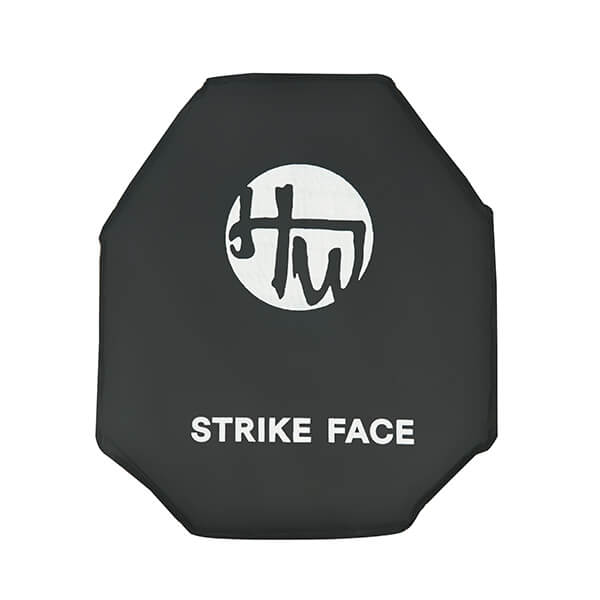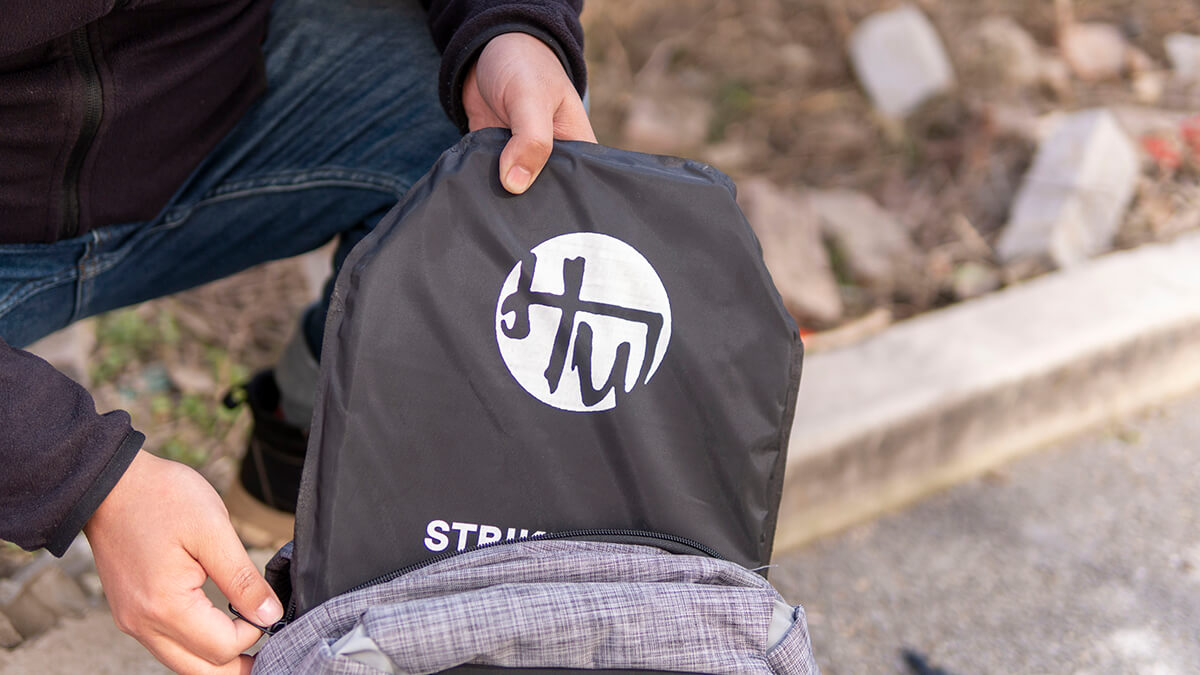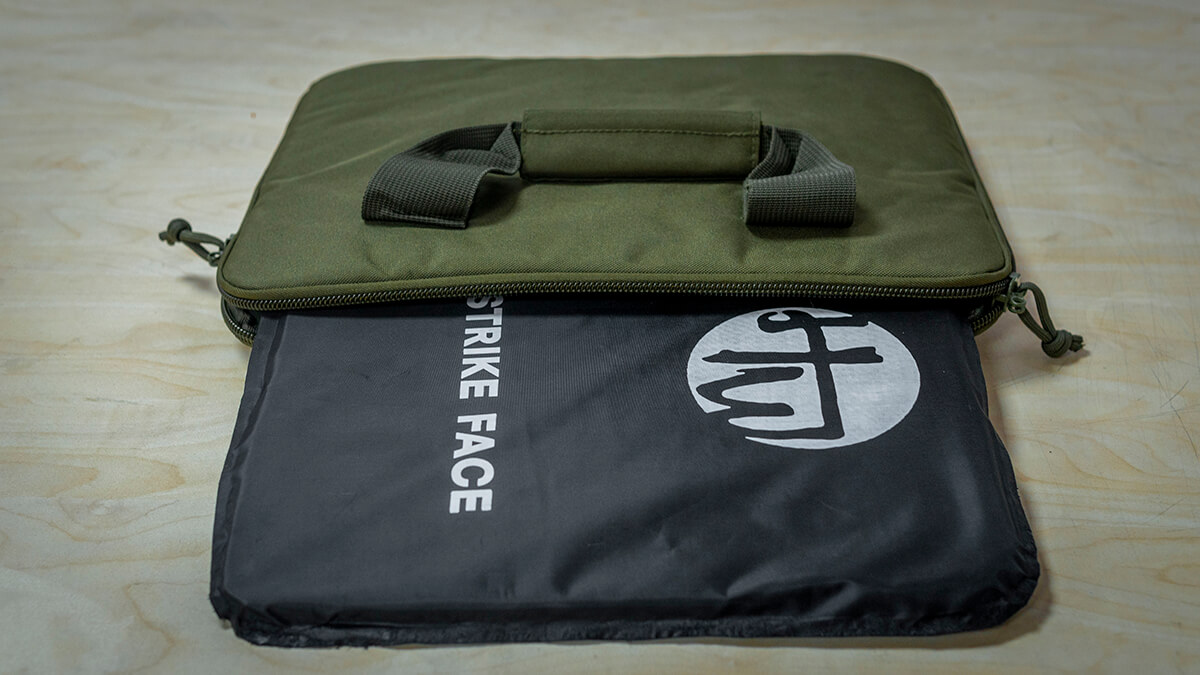Soft armor plates are critical to ballistic protection, providing a more flexible and concealable defense against specific threats. Unlike their hard armor counterparts, soft armor panels are designed to offer lightweight solutions ideal for everyday wear by law enforcement or civilian users. They are particularly effective at mitigating backface deformation, which is the indentation on the armor’s inner side when a bullet is stopped.
Understanding the shelf life and limitations of soft armor is essential. While they offer significant protection against certain threats, it’s important to note that they are not rifle-rated protection, and users requiring protection from rifle rounds must consider additional armor options.
Soft armor is rifle-rated only when combined with additional, specific materials designed to withstand such high-velocity threats. In this post, we will learn more about soft armor, its features, and its uses. Let’s continue reading.

What is Body Armor?
Body armor is personal protection equipment designed to absorb or deflect physical attacks, primarily from firearms and shrapnel from explosions. It comes in various forms, including ballistic vests and protective clothing designed to provide ballistic protection.
Body armor can be categorized into soft and hard, each with different protection levels and intended uses. Owning body armor is a proactive measure for personal safety, and it’s essential to understand body armor 101 before purchasing.
The protection levels of body armor are rated to withstand different types of threats. Ballistic panels within the vest are responsible for stopping bullets, and they are made from materials like ultra-high molecular weight polyethylene to ensure they are bullet-resistant. Soft body armor can withstand multiple hits from lower-caliber weapons, whereas hard body armor, such as ceramic armor or ceramic plates, is needed for high-velocity projectiles.
Comfort becomes a pivotal factor when wearing body armor daily. The design includes shoulder straps and other adjustable features to ensure a secure fit, while added protection, and durability remain at the forefront. For law enforcement officials or private citizens, body armor protects against unforeseen dangers.

What Are Soft Armor Plates?
Soft armor plates are a type of ballistic protection that blends flexibility with effective defense against non-rifle threats. The panels are made from layers of woven or laminated fibers that catch and deform a bullet, spreading its force over a large area. The unique construction of soft armor allows for a significant reduction in backface deformation, which enhances the wearer’s survivability during an impact.
Often chosen for their lightweight benefits, soft armor plates allow for greater mobility and comfort, especially during extended wear. However, users must be aware of the shelf life of these materials, as the fibers can degrade over time, which may compromise their protective capabilities . It’s essential to regularly inspect and potentially replace soft armor to ensure it provides the intended level of defense.
While soft armor plates are excellent for protection against specific ballistic threats, they are not inherently rifle-rated protection. In situations where rifle-rated protection is necessary, additional plate carriers or inserts must be used with soft armor to effectively stop high-velocity rounds . Understanding the capabilities and limitations of soft armor is critical for making informed decisions about personal safety.
Main Features of Soft Armor Plates
Soft armor panels are known for their flexibility and pistol-rated protection, but they do not offer rifle-rated protection without additional reinforcements.
Flexible and Comfortable
Ballistic vests incorporating soft armor panels are renowned for their flexibility and comfort, making them an ideal choice for individuals seeking concealable body armor. The soft materials conform to the body’s shape, allowing for a full range of movement without the rigidity associated with hard armor plates . This flexibility is particularly beneficial for tasks that require agility and discretion.
Concealable body armor is often preferred by undercover law enforcement officers or civilians who want to maintain a low profile while staying protected. The ability to wear soft armor covertly under clothing without sacrificing comfort or mobility makes it a practical option for many.
Thin and Lightweight
The appeal of concealable body armor lies in its lighter weight and less cumbersome design compared to traditional armor. Soft body armor inserts contribute to this by offering protection without adding unnecessary bulk, ensuring the wearer can carry on with their daily activities unimpeded. The slim profile of these inserts allows them to be easily concealed beneath clothing, providing a discreet yet effective layer of defense.
For those in the market for premier body armor that doesn’t compromise on protection, soft armor stands out as a top choice. Its thin and lightweight nature is complemented by advanced materials capable of absorbing energy from ballistic threats, keeping the wearer safe and comfortable during use.
Pistol-Rated Protection
Soft armor plates are designed as protective gear to protect against specific threats, mainly handguns. They are not intended for rifle-rated protection but are highly effective in stopping a wide range of pistol calibers. As part of a comprehensive guide to body armor, it’s crucial to understand that soft armor is specialized for threats typically encountered in certain environments or scenarios.
Additionally, soft armor can be used as backpack armor, providing a portable and convenient form of protection in everyday situations. This versatility allows individuals to adapt their defense to the context of their activities, ensuring they have the necessary protection when it matters most.
Snug Fit
A snug fit is essential for any armor to perform correctly. Soft armor plates are designed to mold to the wearer’s body, providing a close fit that ensures the armor remains in place and offers maximum coverage. This tailored fit minimizes the risk of the armor shifting during movement, which could expose vulnerable areas to threats.
Furthermore, a snug fit contributes to the concealability of the armor, as it reduces the likelihood of printing or showing through clothing. This aspect is particularly important for those who require discretion in their protective gear, such as undercover agents or private citizens.
Proper Coverage
Proper coverage is a fundamental aspect of any protective gear. Soft armor plates are designed to cover vital organs and provide comprehensive protection where needed most. Ensuring that the armor sufficiently covers the chest, back, and sides without restricting movement is critical for effectiveness and comfort .
While soft armor offers excellent protection against certain threats, pairing it with the appropriate carrier is important to ensure complete coverage. The carrier should allow for the secure placement of the armor panels and offer additional pockets for supplementary protection if needed.
Adjustable
Adjustability is a key feature of soft armor plates, allowing for a customized fit to accommodate different body shapes and sizes. An adjustable system ensures that the armor can be tightened or loosened as required, providing a secure fit that maintains protection without causing discomfort.
As the wearer’s body or the conditions of use may change, having the ability to adjust the fit is invaluable. This feature also facilitates the donning and doffing of the armor, making it a practical choice for users needing to quickly equip or remove their protective gear .
Level IIIA Protection
Level IIIA protection is the highest rating available for soft armor panels. It is designed to stop high-velocity rounds from caliber weapons that are commonly used in handguns. IIIA body armor can defend against a wide array of ballistic threats, offering a significant level of defense without the weight and bulk of hard armor plates.
In addition to providing defense against ballistic threats, IIIA body armor can be paired with backpack armor for additional security in everyday situations. This level of protection is suitable for law enforcement, security personnel, and civilians who may encounter high-threat environments.
How Does Soft Armor Work?
Soft armor primarily uses layers of strong fibers to absorb and disperse the energy from a bullet or other projectile’s impact. The key component of soft armor is the strike face, the outermost part that first contacts an incoming round.
As the projectile hits the strike face, the energy is spread throughout the network of fibers, causing the bullet to mushroom or deform, thereby losing its penetrating power. This process dramatically reduces the likelihood of the projectile penetrating the armor and causing harm to the wearer .
The effectiveness of soft armor relies on the quality and arrangement of its fibers. Materials like Kevlar or Twaron are commonly used, each layer catching and slowing the bullet further. The design ensures that even if the outer layers are compromised, subsequent layers provide protection, absorbing the impact and preventing life-threatening injuries.
What Are Soft Body Inserts?
Soft body inserts are a type of ballistic protection that can be placed into the pockets of a vest or other garment. They are designed to protect against firearms that fire lower-velocity rounds, such as handguns.
Unlike hard body armor, intended to stop high-velocity ammunition and potentially rifle fire, soft body inserts are flexible and conform to the body, providing a more comfortable and less conspicuous option. This makes them highly suitable for security guards, police officers, and civilians who require protection without the bulkiness of hard armor plates.
The versatility of tactical body armor allows it to be used in both soft and hard body armor systems. For example, it can be used alone to protect against lower-level threats or in conjunction with hard plates to enhance protection against higher-level threats.
The inserts are made from advanced fabrics and materials engineered to provide the highest level of protection while maintaining flexibility and minimizing weight. Ballistic protection from soft body inserts is typically rated up to Level IIIA, which can stop calibers up to a .44 Magnum.

Hard vs. Soft Armor Plates
When comparing soft armor panels to hard armor plates, the key differences lie in their intended use and their protection level. Soft armor panels are designed to protect the torso from lower-velocity firearms like handguns and shotgun rounds.
They are preferred by military and law enforcement personnel in situations where flexibility and ease of movement are essential. Soft armor is also rated to defend against blunt force trauma and projectile strikes from calibers such as the Liberty Civil Defense 9mm and the FN 5.7×28mm.
On the other hand, hard armor plates are built to withstand high-velocity ammunition and are the highest rated for protection. They are often used by military and police units entering high-risk situations or when facing threats from rifles. These plates can be combined with soft armor panels to create comprehensive armor systems, like in Safe Life Defense body armor vests, which may include trauma pads to further absorb and distribute the force of impacts.
However, hard plates do not provide the same comfort or concealability as soft armor, making them less ideal for security guards or others who must wear soft body armor covertly for long periods of time.
Both armor options have their place in safeguarding individuals against threats. While soft armor panels are more suitable for everyday wear by security guards due to their lightweight and flexibility, hard plates are essential for protection against high-velocity ammunition in combat or tactical situations.
Wrap-Up!
In conclusion, body armor is typically available in various materials and protection levels to suit different needs. Soft armor provides a more flexible and lighter option for protection against handgun threats up to .44 Magnum. It’s made from materials like aramid fibers, which contribute to its effectiveness in stopping bullets and reducing the impact of blunt-force trauma.
